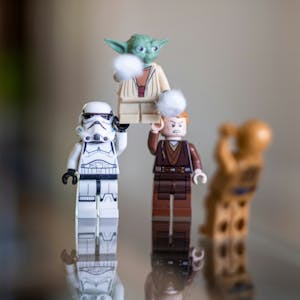Hero banner (upper corner can be rounded)

All about Legos
Sticky Menu
Multi Column
Lego, the iconic toy brand founded in Denmark, has captured the imagination of children and adults alike for decades. The simple yet ingenious design of interlocking plastic bricks allows for endless creative possibilities. From basic structures to intricate models, Lego sets cater to builders of all ages and skill levels.
The versatility of Lego has led to its expansion into various themes and licensed properties. Whether it's recreating famous landmarks, building spaceships from popular sci-fi franchises, or designing original creations, Lego offers something for everyone. The company has also embraced digital technology, developing video games and animated content that bring Lego worlds to life in new ways.
Beyond its role as a toy, Lego has found applications in education and professional fields. Many schools use Lego to teach concepts in science, technology, engineering, and mathematics (STEM). The hands-on nature of Lego makes it an effective tool for developing problem-solving skills, spatial awareness, and creativity. Some architects and engineers even use Lego for prototyping and visualizing complex designs.
Despite the rise of digital entertainment, Lego has maintained its popularity and relevance. The tactile experience of clicking bricks together and the satisfaction of completing a build continue to appeal to people of all ages. Lego has also fostered a strong community of enthusiasts who share their creations online, participate in building competitions, and even attend Lego conventions. This enduring appeal has cemented Lego's place as a cultural icon and a timeless medium for creative expression.
FAQ List
LEGO was founded in 1932 by Ole Kirk Christiansen in Billund, Denmark.
Media Text Block
LEGO appeals to a diverse audience, spanning various age groups and backgrounds. While primarily marketed to children aged 4-12, it has gained significant popularity among teenagers and adults. Children benefit from LEGO's ability to develop fine motor skills and creativity, while teens and adults often engage with more complex sets, use it for stress relief, or pursue it as a serious hobby. There's even a dedicated adult fan base known as AFOLs (Adult Fans of LEGO).
Beyond individual enthusiasts, LEGO has found its place in professional and educational settings. Architects and engineers use it for conceptual modeling, artists incorporate it into sculptures, and educators employ it to teach STEM concepts. It's also used in therapy for individuals with special needs. LEGO's versatility as both a toy and creative medium, combined with its themed sets appealing to pop culture enthusiasts, contributes to its enduring popularity across generations and interests.

This iconic yellow-headed figure was first introduced in 1978 and has become synonymous with the LEGO brand. With over 8 billion produced, it holds a Guinness World Record for the most reproduced character in the world.
LEGO Minifigure

The protagonist of "The LEGO Movie," Emmet is an ordinary construction worker who becomes the "Special." His journey from average joe to hero resonated with audiences worldwide, making him one of the most recognizable modern LEGO characters.
Emmet (The LEGO Movie)

This humorous, self-absorbed version of the Dark Knight first appeared in LEGO video games before starring in "The LEGO Batman Movie." His popularity has led to numerous LEGO sets, cementing his status as a fan-favorite character across multiple media.
LEGO Batman

As the main antagonist of the classic LEGO Pirates theme, Captain Redbeard has been terrorizing LEGO seas since 1989. His distinctive appearance with a hook hand and eye patch has made him an enduring symbol of LEGO's adventure-themed sets.
Captain Redbeard
Image Grid






Contact Form
Contact us
Engaging in dialogue with the LEGO Corporation is crucial for maintaining the toy's relevance and innovation in a rapidly changing world. By communicating with LEGO, consumers can provide valuable feedback on existing products and suggest new ideas, helping to shape the future direction of the brand. Additionally, open communication channels between LEGO and its community foster a sense of connection and loyalty, ensuring that LEGO continues to meet the evolving needs and desires of its diverse user base.
Block Quote
LEGO is universal. So many people enjoy it, from young to old. It's such a great creative outlet. You can make anything you want to make, and if you can imagine it, you can build it.
— Nathan Sawaya
Profile Card
Niels B. Christiansen has been the CEO of LEGO Group since 2017. Before joining LEGO, he served as the CEO of Danfoss, a global industrial technology company, for nine years. Christiansen holds a Master's degree in Engineering from the Technical University of Denmark and an MBA from INSEAD, and under his leadership, LEGO has continued to innovate and expand its digital presence while maintaining its core focus on creative play through physical bricks.

Video
Call to Action Button
Rounded Media Block
Content List
Card List


